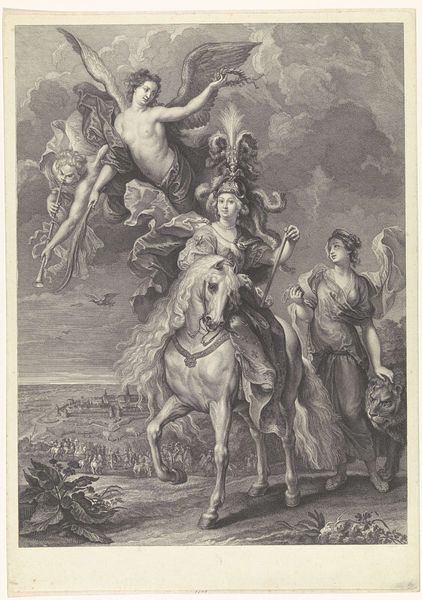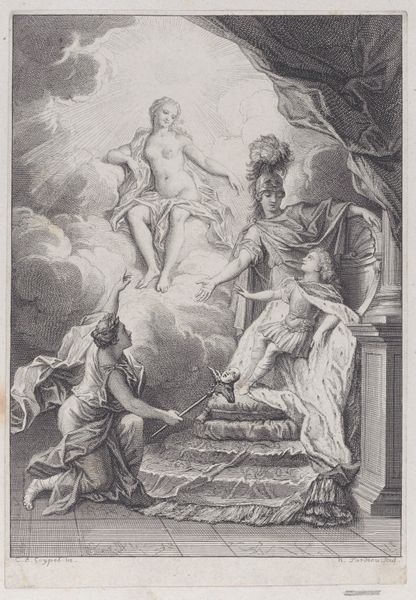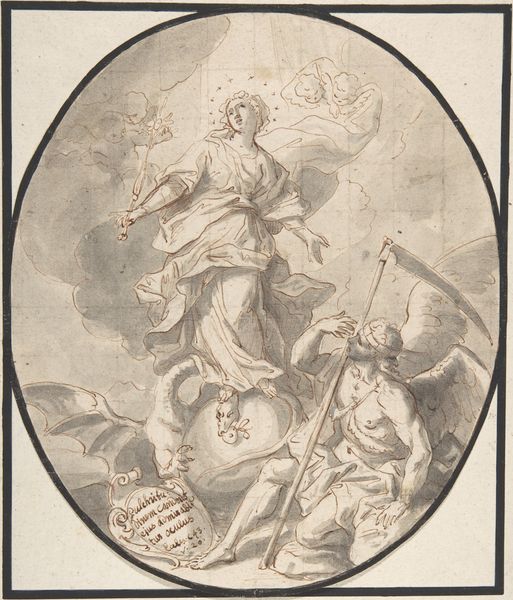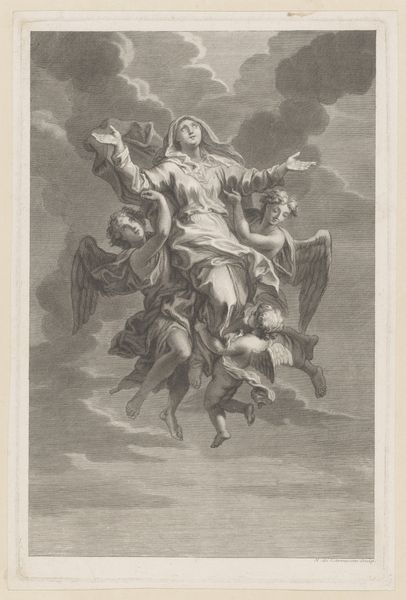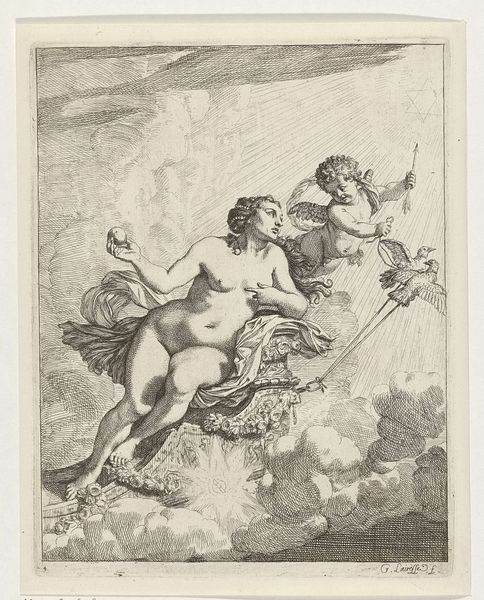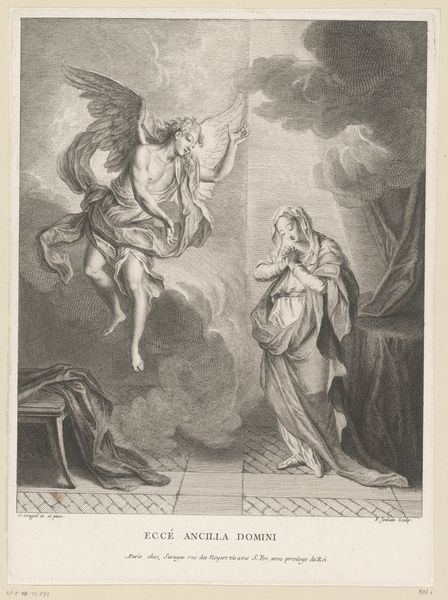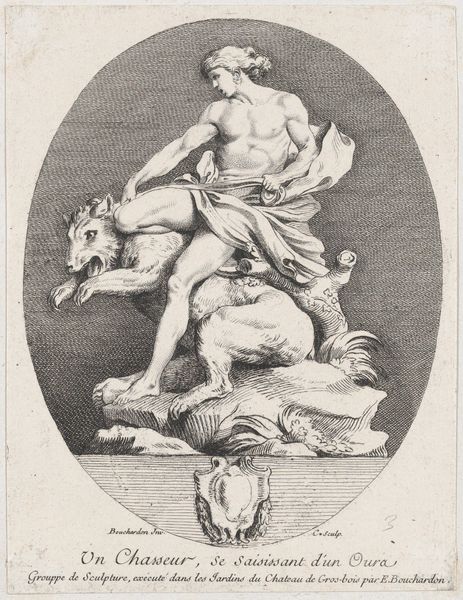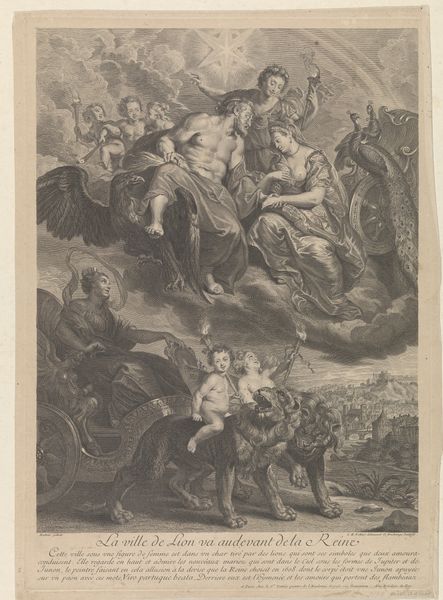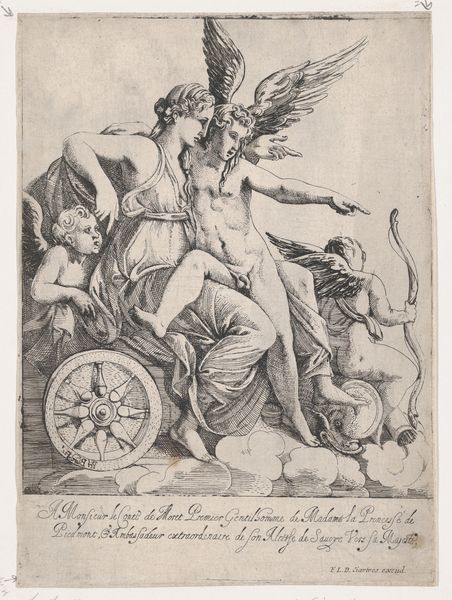
drawing, print, sculpture, engraving
#
drawing
#
baroque
# print
#
figuration
#
sculpture
#
cityscape
#
history-painting
#
engraving
Dimensions: Plate: 17 7/8 × 12 13/16 in. (45.4 × 32.6 cm) Sheet: 20 7/8 × 15 3/16 in. (53.1 × 38.6 cm)
Copyright: Public Domain
Editor: Here we have Louis Desplaces's engraving from around 1729-1740, "A statue of Marcus Curtius on horseback." I find the theatrical drama and dynamism so striking! What narratives do you think Desplaces is trying to engage with here? Curator: Well, considering the context of the Baroque period and its penchant for grand spectacle, it's interesting to look at how this engraving perpetuates a particular narrative around heroism and sacrifice, especially when we consider who had access to and control over such imagery. Think about it: what ideologies were being reinforced by presenting Marcus Curtius as this idealized, almost superhuman figure? Editor: So it's less about historical accuracy and more about... projecting power? The ideal of sacrifice, perhaps? Curator: Exactly! The story of Marcus Curtius, the Roman hero who sacrificed himself by leaping into a chasm to save Rome, becomes a vehicle. A vehicle for the powerful elite, whether Roman emperors, or in this case, 18th-century European royalty, to frame their authority as divinely ordained and intrinsically tied to the well-being of the state. How do you feel this intersects with gender roles in this period? Editor: That’s a fascinating point. I suppose the sculpture presents this uber-masculine, self-sacrificing hero figure. Do you think this also contributes to defining citizenship in a certain way, almost as a performative act? Curator: Absolutely. It’s about who gets to embody this heroic ideal and who is excluded. Who gets to define what "saving" the state looks like, and who benefits from those definitions? Reflect on the message being conveyed: who had the right to demand such sacrifice and to decide what constituted the greater good. Editor: It seems this engraving functions almost as propaganda. Curator: Precisely! Looking at it that way offers insight into its original function, and invites a critical perspective on its impact. Editor: That really changes how I see the piece. It’s no longer just an image, but an argument about power. Curator: It reveals that the artwork’s function goes beyond aesthetic admiration, by showing how visual representation can normalize social expectations and reinforce political structures.
Comments
No comments
Be the first to comment and join the conversation on the ultimate creative platform.
